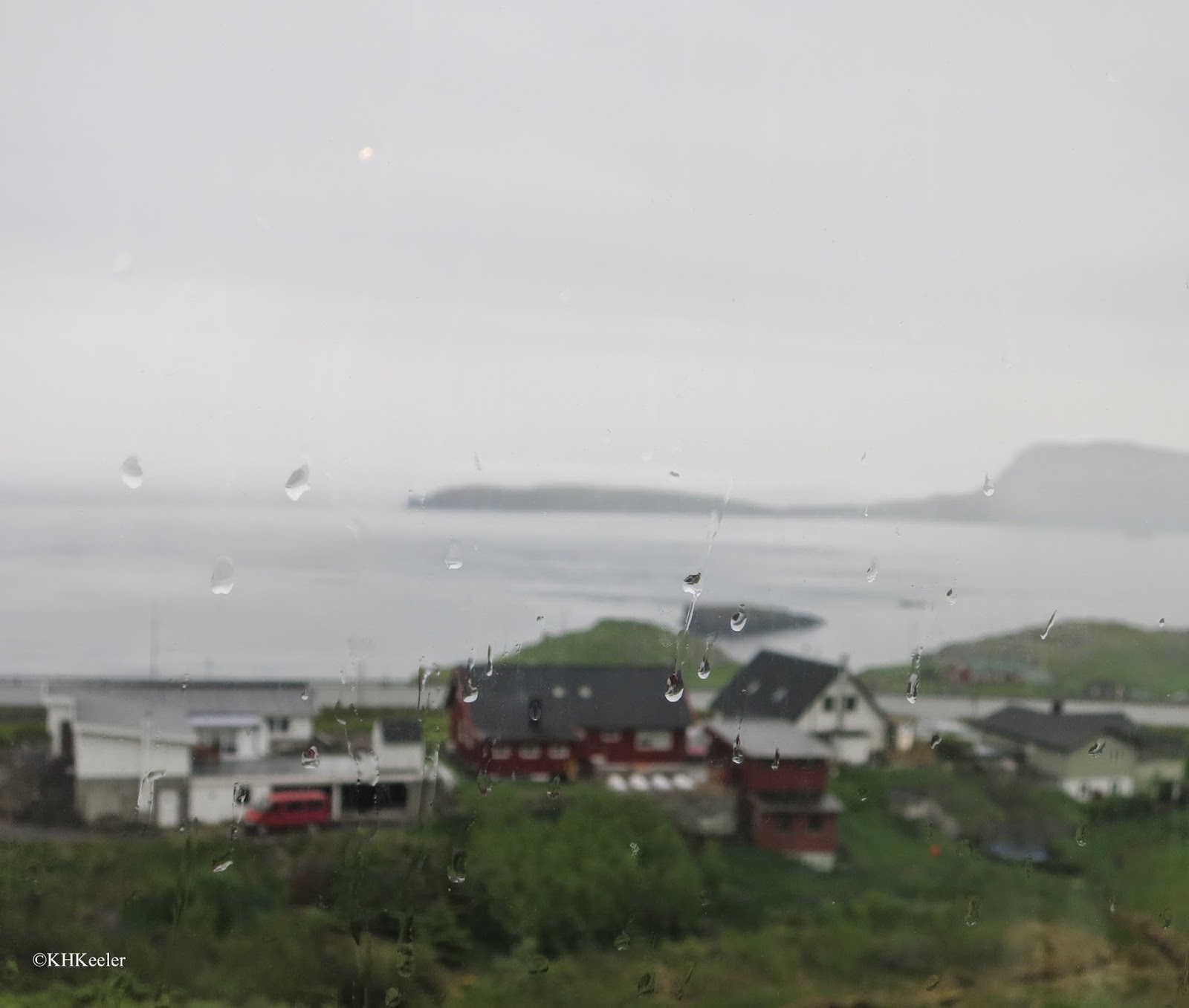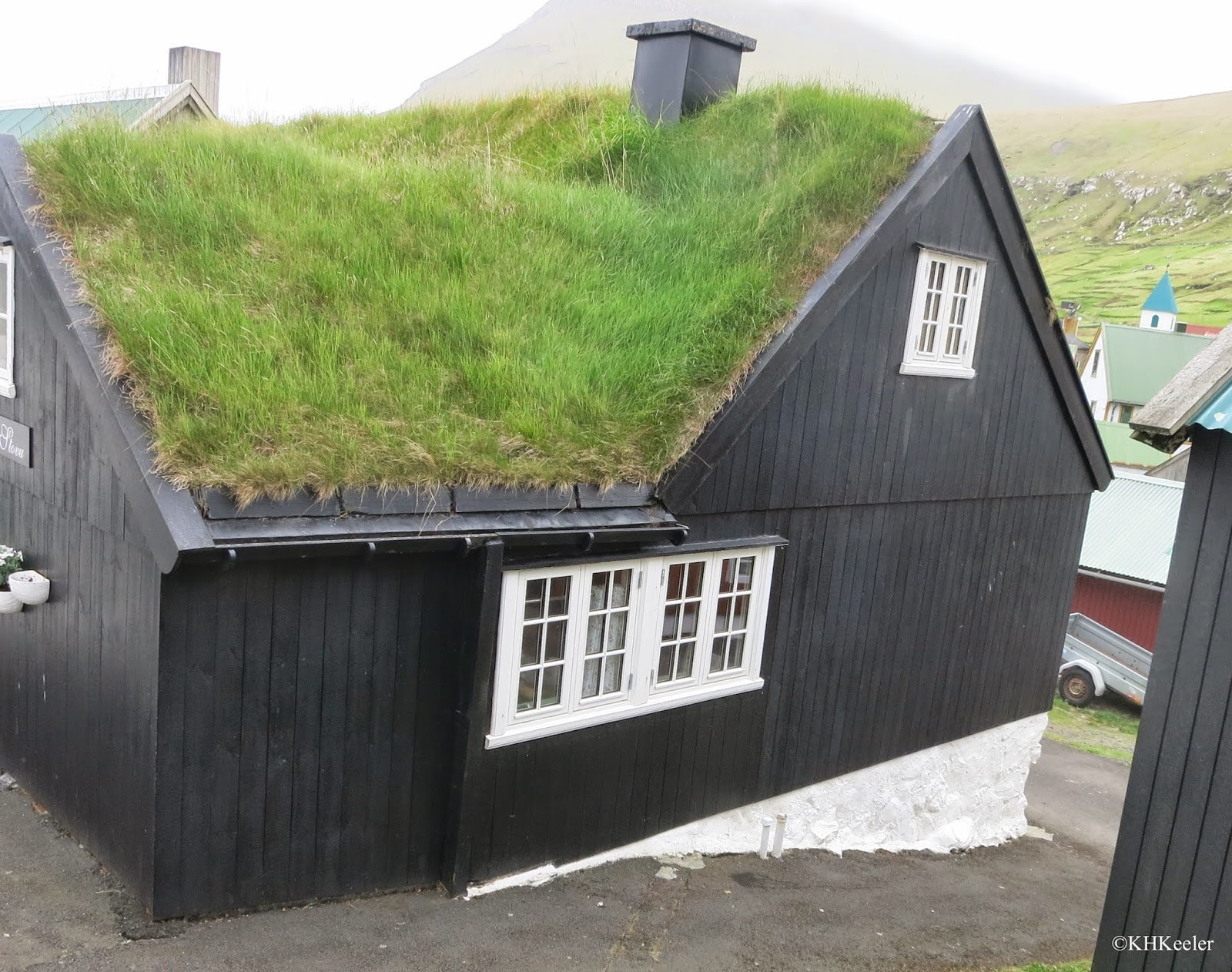 |
| Faroe Island rainy morning, through the bus window |
It was cool and raining when we arrived. On the same latitude as the middle of Hudson Bay, the Atlantic's Gulf Stream keeps the temperatures mild. Average highs are about 51 ( 11 C) in summer and 37 (3 C) in winter. It rains more than 16 days a month all year round, though the rain may be a passing shower or a day of drizzle. Total annual rainfall varies between islands but in the capital, Tórshavn, it is about 50" (1280 cm).
The Faroes were settled about 800 AD by colonists from Norway. The islands were uninhabited when the colonists arrived, but overrun by sheep. Archaeologists think the islands were settled at least twice before the Norse arrived. Possibly St. Brennan of Ireland reached the Faroes, but even if he wasn't there personally, Irish monks were. Someone undeniably brought the sheep. The colonists from Norway were happy to have the sheep and called the place the Sheep Islands (Faroes).
The climate is too cool to successfully grow most crops. The Faroese lived on sheep, fish and wild birds. Fishing and salmon farming are among their 21st century occupations. The total population is about 48,000. They are a largely independent province of Denmark and use the Danish krone. The language, however, is a distinct Scandinavian language, Faroese, derived from Old Norse.
Beautiful islands
 |
| low clouds, Faroe Islands |
Many houses have shingle roofs and white paint, but the traditional house continues to be built. The dark walls absorb heat (too hot is really not a Faroe concept). The grass roofs are practical: they insulate the house extremely well and most of the time require no maintenance. If there is a week or so without rain, though, owners do need to water their roofs.
 |
| traditional Faroese house: grass on the roof, black house |
The hillsides are covered in green with lush grass, well-suited for the sheep (second photo.)
 |
| grassy hillside, Faroe Islands |
 |
| sheep grazing, Faroe Islands |
 |
| field of marsh marigolds on the Faroes |
 |
| marsh marigolds in a glass; they made excellent cut flowers |
When we visited Gjógv, where there's a deep and very scenic ravine, suddenly there were all kinds of different plants--out of reach of the sheep.
 |
| diverse plants on the steep sides of the ravine, Faroes |
 |
| more plants on the steep ravine, Faroes |
 |
| Ravine at Gjógv |
 |
| rain running off as waterfall |
 |
| Faroe Island coastline, with bird watchers |
References
http://www.faroeislands.com
Proctor, J. 2013. Faroe Islands. 3rd ed, Bradt Travel Guides, UK. www.bradtguides.com
Kathy Keeler
More at awanderingbotanist.com


Faroe Islands is the most beautiful island I have ever seen after the visit of niagara falls boat tour us side. Each destination over there is able to visit. I still never saw this complete island but wish to visit there soon again and travel around these awesome attractions. I really enjoy to read your blog.
ReplyDelete